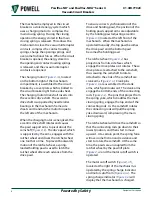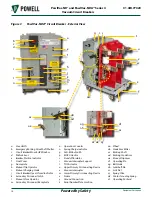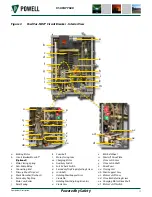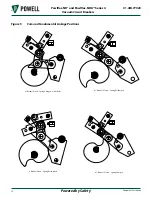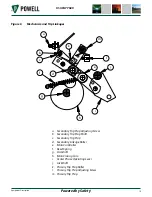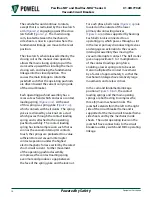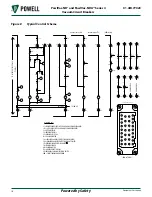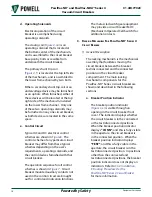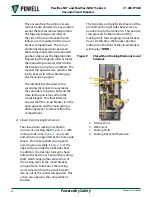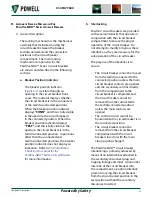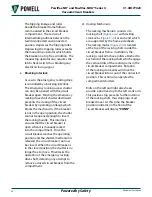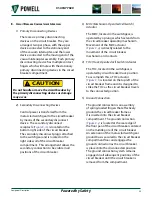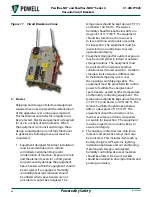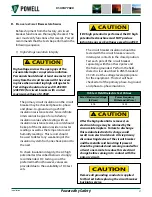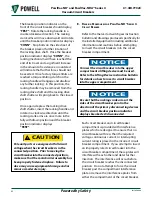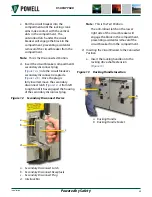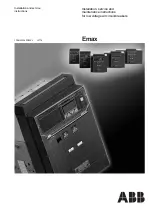
Powered by Safety
®
21
Equipment Description
01.4IB.77020
D. A
utoMAtIc
r
AckInG
M
echAnISM
f
or
p
oWl
v
Ac
-nDA
™
S
erIeS
4 c
IrcuIt
B
reAker
1) General Description
The racking mechanism is the mechanical
assembly that facilitates moving the
circuit breaker between the breaker
test/disconnected and the connected
positions in the circuit breaker
compartment. The main racking
mechanism components for the
PowlVac-NDA™ Series 4 circuit breakers
are shown and described in the following
sections:
a. Breaker Position Indicator
The breaker position indicator
is visible through an
opening in the circuit breaker front
cover. The indicator displays whether
the circuit breaker is in the connected
or the test/disconnected positions.
When the breaker position indicator
displays
“CONN”
, and this is fully visible
in the aperture, the circuit breaker is
in the connected position. When the
breaker position indicator displays
“TEST”
, and this is fully visible in the
aperture, the circuit breaker is in the
test/disconnected position. In positions
other than the connected and
test/disconnected positions, the breaker
position indicator does not display an
indication. Refer to
PowlVac-NDA™ Series 4 Circuit Breaker
for more information.
b. Interlocking
PowlVac® circuit breakers are provided
with several interlocks that operate in
conjunction with the circuit breaker
compartment to ensure the proper
operation of the circuit breaker. Do
not attempt to modify or bypass these
interlocks, as they are necessary for the
safe operation of the circuit breaker.
The purpose of the interlocks is to
ensure:
• The circuit breaker cannot be moved
from the test/disconnected to the
connected position unless the main
circuit breaker contacts are opened
and the secondary control circuitry
from the compartment to the
circuit breaker is completed, and
the circuit breaker cannot be
removed from the connected to
the test/disconnected position
unless the main contacts are
opened.
• The control circuits cannot be
broken when the circuit breaker is in
the connected position.
• The circuit breaker cannot be
removed from the circuit breaker
compartment with the circuit
breaker closed or with the main
closing spring charged.
The PowlVac-NDA
™
circuit breaker
interlocking is primarily achieved by
means of an interlock bar attached to
the secondary disconnect plug and
tripping linkage and roller. Upon initial
insertion of the circuit breaker into
the compartment, a position interlock
prevents moving the circuit breaker
from the disconnected position to the
test position without the secondary
disconnect inserted.


